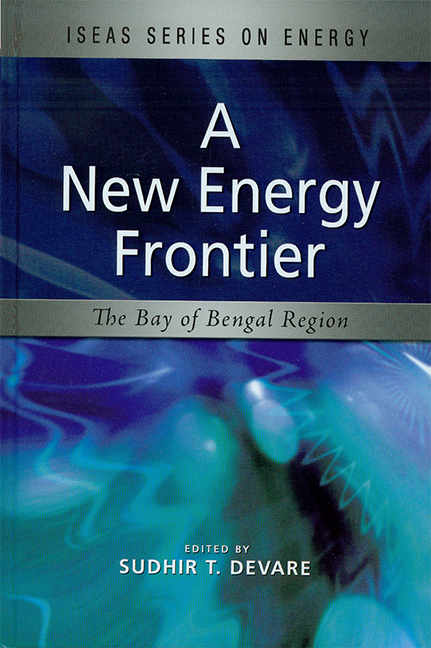Book contents
- Frontmatter
- Content
- Foreword
- Message from the Director
- Preface
- The Contributors
- 1 An Overview of the Energy Scene in the Bay of Bengal Region
- 2 Current and Expected Energy Production and Consumption within the Bay of Bengal Region: A Synopsis
- 3 Gas Potential at the Bay of Bengal and Implications for India's Energy Security
- 4 Macroeconomic Challenges for the Growth of the Energy Sector in Bangladesh in the Context of Regional Integration
- 5 Energy in the Bay of Bengal Region: Myanmar's Perspective
- 6 Marine-related Energy Resources in the Eastern Indian Ocean: Indonesian Perspective
- 7 Energy Trading and Singapore's Role as a Hub
- 8 Bay of Bengal: Awakening of a Potential Giant Area
- 9 Energy Transportation Security in the Bay of Bengal
- 10 Ethical Business Practice or Camouflage? Energy and Mining Companies and Corporate Social Responsibility
- 11 Sustainable and Renewable Energy: Scenarios for the Future
- Index
1 - An Overview of the Energy Scene in the Bay of Bengal Region
Published online by Cambridge University Press: 21 October 2015
- Frontmatter
- Content
- Foreword
- Message from the Director
- Preface
- The Contributors
- 1 An Overview of the Energy Scene in the Bay of Bengal Region
- 2 Current and Expected Energy Production and Consumption within the Bay of Bengal Region: A Synopsis
- 3 Gas Potential at the Bay of Bengal and Implications for India's Energy Security
- 4 Macroeconomic Challenges for the Growth of the Energy Sector in Bangladesh in the Context of Regional Integration
- 5 Energy in the Bay of Bengal Region: Myanmar's Perspective
- 6 Marine-related Energy Resources in the Eastern Indian Ocean: Indonesian Perspective
- 7 Energy Trading and Singapore's Role as a Hub
- 8 Bay of Bengal: Awakening of a Potential Giant Area
- 9 Energy Transportation Security in the Bay of Bengal
- 10 Ethical Business Practice or Camouflage? Energy and Mining Companies and Corporate Social Responsibility
- 11 Sustainable and Renewable Energy: Scenarios for the Future
- Index
Summary
The world is going through an uncertain energy situation. A number of circumstances not directly related to oil and gas production had been driving the prices to a record high. The sharp rise of oil prices which had reached US$70 per barrel in 2006 had thrown markets in a dizzy. And the price which crossed US$135 per barrel in May 2008 shook the economies around the world. Clearly this price is too high for most of the non-oil-producing countries to sustain.
In Asia, it is a coincidence that most of the major economies, namely, Japan, China, India and ASEAN (there are only a couple of ASEAN countries such as Malaysia and Brunei which export oil; the rest including the largest country Indonesia are net importers) are dependent on oil and natural gas imports. With the Indian and Chinese economies projected to grow by 8 to 10 per cent in the coming decade or so, their requirements for energy are expected to rise exponentially. Both are oil importers. India currently depends on imports for over 70 per cent of its oil needs, and that dependence is likely to go up to 85 per cent by 2015. By 2010, China also is estimated to depend on imports for more than 60 per cent of its oil requirements. As in the case of oil, these rapidly growing economies would require very large and regular supplies of natural gas in years to come.
Oil and Natural Gas in the Bay of Bengal Region
Today, Asia's influence on the world's energy landscape is considerable. Asia is the leading producer and a major consumer. Consumption of energy in the fast-emerging economies of Asia is growing rapidly. By 2010, the Asian oil demand will be higher than that of North America. Today, Asian cooperation is vital for both consuming and supplier nations of the world. Looking at different parts of Asia, the Middle East and Central Asia are some of the principal oil and gas producing countries in the world; Northeast Asia with the industrialized economies of Japan, China and Korea, is a large consumer, while South and Southeast Asia are rapidly growing economies with a high level of consumer demand.
- Type
- Chapter
- Information
- A New Energy FrontierThe Bay of Bengal Region, pp. 1 - 15Publisher: ISEAS–Yusof Ishak InstitutePrint publication year: 2008



